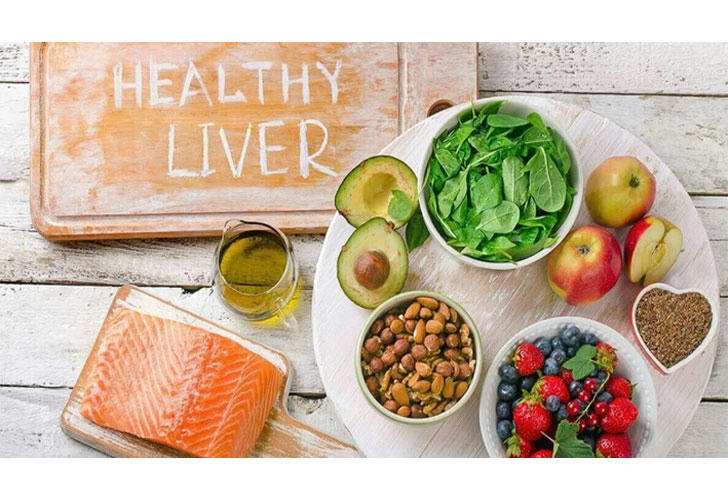What food should and should not patients with cirrhosis eat?
Liver cirrhosis affects over 4.5 million Americans, causing irreversible scarring that disrupts liver function. While medical treatment is essential, proper nutrition plays a critical role in slowing disease progression, managing complications, and improving quality of life. This guide explains what foods to prioritize, why they matter, and practical product recommendations to simplify your diet plan.

Problem 1: Protein Deficiency & Muscle Wasting
Why It Matters:
Damaged livers struggle to metabolize protein, increasing risks of muscle loss and edema. However, too much protein can trigger hepatic encephalopathy (brain fog) in advanced cases.
Diet Solutions:
High-Quality Proteins (0.8–1.2 g/kg body weight daily):
Egg whites: Easily digestible, low in ammonia-producing compounds.
Greek yogurt: Provides probiotics + 17g protein per 6 oz.
Skinless poultry: Bake or grill chicken/turkey breast.
Tofu: Plant-based option for vegetarian patients.
Avoid: Red meat (high in saturated fats), processed deli meats (excess sodium).
Problem 2: Sodium Overload & Fluid Retention
Why It Matters:
Cirrhosis impairs albumin production, leading to ascites (abdominal fluid buildup). Excess sodium worsens swelling.
Diet Solutions:
Low-Sodium Foods (<2,000 mg/day):
Oatmeal: 0 mg sodium per serving vs. sugary cereals (200+ mg).
Fresh herbs: Use basil, cilantro, or lemon juice instead of salt.
Unsalted nuts: Almonds/walnuts for healthy fats.
Frozen vegetables: Choose brands like Birds Eye Steamfresh (no added salt).
Avoid: Canned soups (900+ mg/serving), fast food, soy sauce.
Problem 3: Vitamin Deficiencies
Why It Matters:
A damaged liver can’t store vitamins A, D, E, K, or B12 effectively, causing fatigue, bruising, and nerve damage.
Diet Solutions:
Vitamin-Rich Foods:
Spinach: High in folate and vitamin K (steam to reduce oxalates).
Carrots: Beta-carotene (vitamin A precursor) supports immunity.
Fortified cereals: Cheerios provides 25% DV vitamin D per cup.
Salmon: 570 IU vitamin D per 3 oz (wild-caught preferred).
Problem 4: Blood Sugar Imbalance
Why It Matters:
Cirrhosis increases insulin resistance, raising diabetes risk.
Diet Solutions:
Fiber-Rich Carbs:
Quinoa: 5g fiber + 8g protein per cooked cup.
Berries: Blueberries/strawberries stabilize glucose spikes.
Legumes: Lentils (16g fiber/cup) improve glycemic control.
Avoid: White bread, sugary snacks, soda.
Problem 5: Toxin Buildup
Why It Matters:
A failing liver can’t filter toxins like ammonia, worsening confusion and fatigue.
Diet Solutions:
Detox-Supporting Foods:
Garlic: Activates liver enzymes to flush toxins.
Green tea: EGCG antioxidants reduce oxidative stress.
Beets: Betaine promotes bile flow to remove waste.
Recommended Products for Cirrhosis Patients
Simplify your diet with these science-backed options:
1. Protein Supplements
Orgain Organic Protein Powder (Amazon): Plant-based, low-sodium (20mg/serving), with 21g pea protein.
Ensure Enlive (Walmart): Medical-grade shake with 20g protein + 350 calories for malnourished patients.
2. Low-Sodium Staples
Mrs. Dash Salt-Free Seasonings (Target): 14 herb blends for flavor without sodium.
Primal Kitchen Avocado Oil Mayo (Whole Foods): 0mg sodium vs. 90mg in regular mayo.
3. Vitamin Supplements
Thorne B-Complex #12 (thorne.com): Methylated B vitamins for better absorption.
Nordic Naturals Vitamin D3 (CVS): 1,000 IU per softgel to counter deficiency.
4. Snacks for Blood Sugar Control
Kind Zero Sugar Bars (Walgreens): 5g fiber, 0g added sugar.
Sensible Portions Veggie Straws (Costco): Low-sodium, gluten-free crunch.
Sample 1-Day Meal Plan
Breakfast:
Scrambled egg whites with spinach + ½ cup oatmeal (topped with blueberries).
Drink: Green tea.
Lunch:
Grilled chicken salad (mixed greens, carrots, beets, olive oil dressing).
Side: ¼ cup unsalted almonds.
Dinner:
Baked salmon with quinoa + steamed broccoli.
Dessert: Greek yogurt with sliced strawberries.
Snack:
- Celery sticks with unsalted almond butter.
Foods to Strictly Avoid
1. Alcohol: Accelerates liver damage (even small amounts).
2. Raw shellfish: High risk of bacterial infection.
3. Grapefruit: Interferes with cirrhosis medications.
4. High-fat fried foods: Overwork the liver.
When to See a Dietitian
Consult a specialist if you experience:
Unintentional weight loss (>5% in 1 month).
Persistent nausea/vomiting.
Yellowing skin/eyes (jaundice).
Many insurance plans (including Medicare) cover medical nutrition therapy for cirrhosis.
Final Takeaway:
A cirrhosis-friendly diet isn’t about deprivation—it’s about strategic nourishment. By prioritizing high-quality proteins, low-sodium ingredients, and antioxidant-rich foods, you can reduce complications and regain energy. Pair these choices with recommended products to build meals that are both healing and satisfying.
